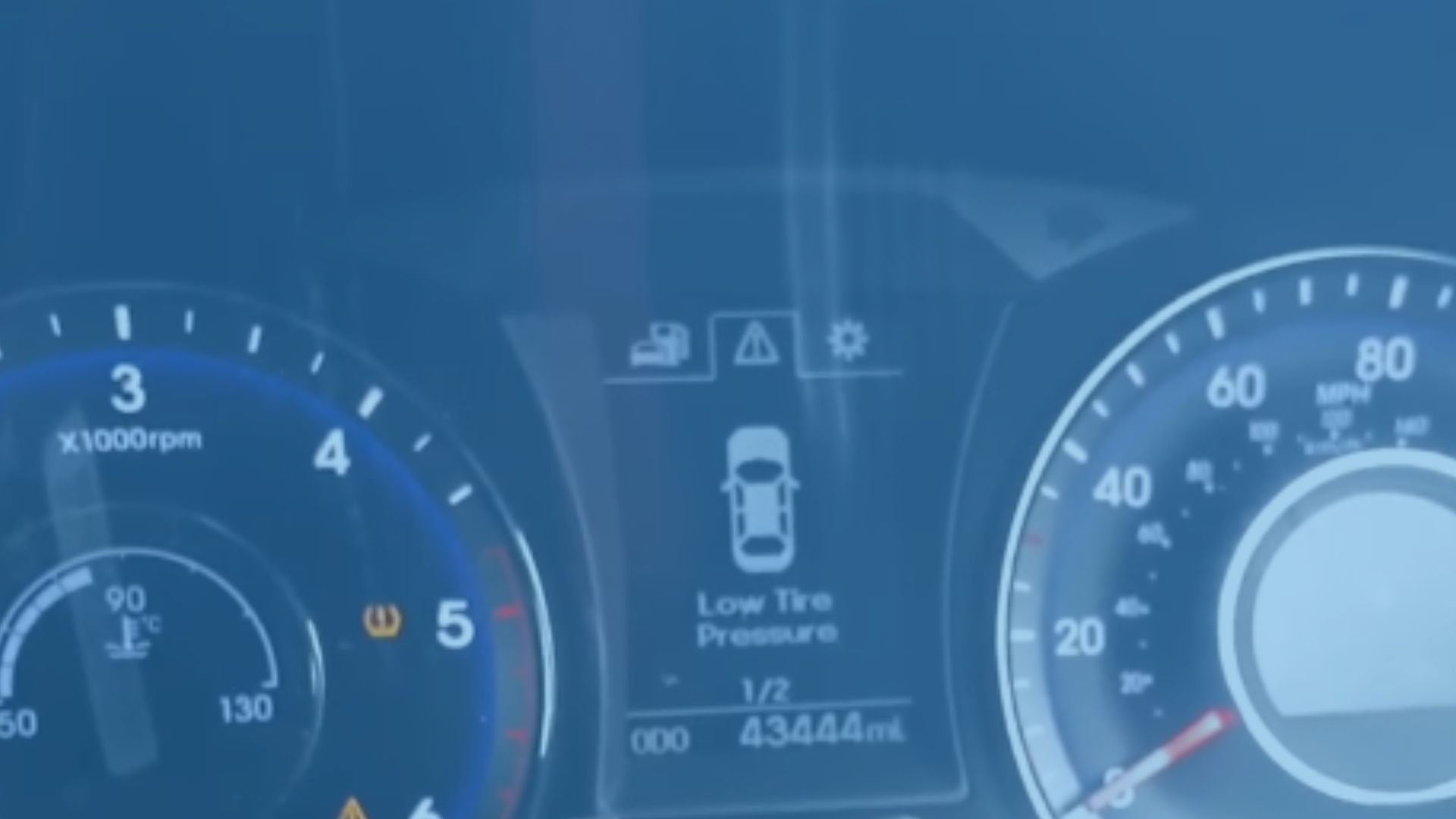Hyundai vehicles are fitted with a Tire Pressure Monitoring System (TPMS), which informs the driver if any of the vehicle’s four tyres gets dangerously low in pressure.
How to Reset Hyundai Santa Fe Tire Pressure Light
- Drive the car at 50 mph for around ten minutes.
- Without starting the car, turn the ignition key to the “On” position.
- Release the TPMS reset button after three seconds or until the light blinks three times.
- Start the car and let it run for 20 minutes to reset and calibrate the sensor.
In most Hyundai Santa Fe automobiles, the tyre pressure monitor’s reset button is found under the steering wheel.
It’s also possible to be perplexed as to why the tyre pressure indicator remains illuminated after the tyres have been filled. The air pressure warning light may remain glowing after you’ve put air into your tyres due to a problem with your Tire Pressure Monitoring System or a steady leak.
If the TPMS warning light shines again after you’ve inflated the tyre, use a pressure gauge to double-check that the tyre is correctly inflated to the appropriate air pressure.
How Do You Reset the Tyre Pressure Warning on a Hyundai Santa Fe?
- Hyundai Tire Pressure Monitoring System Reset
- Lock the doors and place the Hyundai on a level surface.
- Remove the valve cover from the tyre that the tyre pressure monitor has indicated as having low air pressure.
- Insert the nozzle end of the pressure gauge into the nozzle and push it in to measure the current air pressure.
- Insert the end of the compressed air line into the valve and keep it there for a few seconds to inflate the tyre.
When Else Can Be Done To Turn OFF TPMS In Hyundai Santa Fe?
The tire pressure indicator should turn off on its own after your tires are adequately filled. If it continues to light up, try one of the following techniques to turn it off: For 10 minutes, drive at or above 50 mph. The tire pressure sensor may reset the next time you start the car as a result of this.
Underlying Cause of TPMS Failure
- Tyre pressure sensors that have reached the end of their functional life cause the bulk of tyre pressure monitoring system failures.
- The batteries in most tyre pressure sensors have a service life of 5 to 7 years, which is the industry standard.
- Corrosion on the valve stem or within the valve stem itself has the potential to cause tire pressure sensors to fail.
Advantages of Resetting TPMS in Hyundai Santa Fe
Although the TPMS is one of the less serious dashboard warning lights, it should never be disregarded if the tire sensors indicate a problem. If you have one or more under-inflated tires. Resetting your clock will assist you.
- Increase your fuel efficiency.
- Results in an efficient vehicle handling
- Increase tire longevity by distributing wear and tear evenly.
- Improve your driving safety (if you drive on under-inflated tires, you will experience damage to the sidewall that can lead to blowouts)
What Happens If I Don’t Reset Hyundai Santa Fe TPMS?
A faulty TPMS might result in poor fuel economy. Poor inflation may have disastrous consequences for vehicle safety, including tire failure and breakdown.
Tires that are properly inflated might be the difference between safe driving and higher accident risk.
What Exactly You Should Do After Your TPMS Light Is On?
If your TPMS light turns on while driving or remains on after starting your car, go to a gas station or rest stop with an air pump and inflate the tire(s) to the appropriate PSI.
One of these two reasons may cause the tire pressure to drop:
- A drastic drop in temperature
- Tiny puncture or a leak
When the temperature lowers, the air in your tires becomes denser and takes up less space, resulting in lowered pressure.
Think of adding a little air like filling off your petrol tank. Unfortunately, when a motorist recognizes they require tire repair, it’s usually because there’s a puncture that will result in a flat.
If you have more than a few miles to go, you might consider installing your spare tire instead of topping off the problematic tire.
How Do You Know Whether Your Tires Are Properly Inflated?
Invest in a trustworthy tyre pressure gauge. Check your tyres before you go or at least three hours after you’ve driven them when they’re “cool.” Insert the tire pressure gauge into the valve stem of your tyre. Compare it to the psi specified on the sticker inside the driver’s door or in the owner’s manual to find the right psi for your automobile.
What Is the Tyre Pressure That Should Be Used?
Between 30 and 35 pounds per square inch is the ideal pressure (PSI).
Tire pressure guidelines can be located on a sticker in the door jamb or your owner’s manual. Several automobiles even place the stickers in prominent spots such as the trunk lid, the console, or the fuel door!

